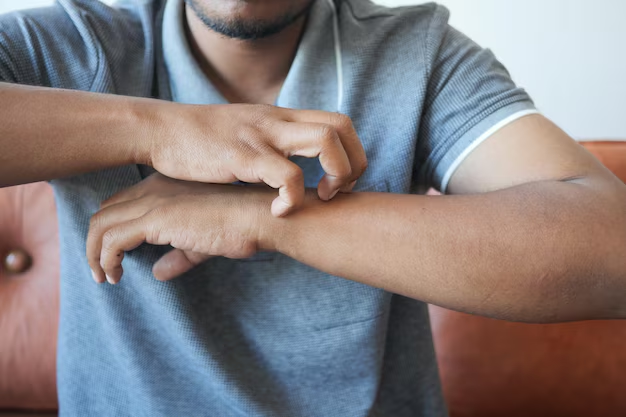Understanding and Managing Shingles: An Essential Guide for Relief and Recovery
Have you ever experienced a sudden, painful rash on one side of your body? If you're nodding, you might have encountered shingles. This condition, known scientifically as herpes zoster, emerges when the varicella-zoster virus reactivates in your body, often years after you've had chickenpox. In this article, we delve into what shingles is, how it manifests, and most importantly, how you can manage its symptoms effectively.
What is Shingles?
Shingles is a viral infection distinguished by a blistering skin rash that is often accompanied by pain. It typically appears in a stripe pattern on one side of the body or face. This condition is caused by the varicella-zoster virus, the same virus that triggers chickenpox. After recovering from chickenpox, the virus remains dormant in your nervous system and can reactivate later in life as shingles.
Who is at Risk?
- Age Factor: Shingles predominantly affects older adults, especially those over age 50.
- Immune System: People with weakened immune systems, due to stress, illness, or medication, are at higher risk.
- Previous Chickenpox: Anyone who has had chickenpox is at risk of developing shingles later.
Recognizing the Symptoms
Early detection of shingles can significantly aid in managing symptoms and preventing complications. Here's what to look for:
Initial Signs
- Pain and Tingling: Often the first symptoms, these sensations might precede a rash by a few days.
- Itching or Burning: Discomfort in a particular area, where the rash might soon appear.
Rash and Blisters
- Appearance: A red rash develops, often turning into fluid-filled blisters that eventually crust over.
- Location: Typically occurs on one side of the body, following the path of a nerve.
Additional Symptoms
- Fever and Chills: Some experience flu-like symptoms.
- Headache and Fatigue: Overall feeling of tiredness can accompany the rash.
- Sensitivity to Light: Eye discomfort, especially if shingles affects the face.
Seeking Medical Help
If you suspect you have shingles, it's important to see a healthcare professional promptly. Early treatment can help minimize complications and reduce the severity and duration of the illness.
What Doctors May Do
- Diagnosis: Often based on the distinctive appearance of the rash.
- Antiviral Medications: Prescribed to combat the virus, these are most effective when taken early.
- Pain Management: Pain relief options may include over-the-counter painkillers or prescribed medications for severe pain.
Home Remedies and Self-Care
While medical treatment is crucial, home remedies can complement professional care and provide additional comfort.
Skin Care Tips
- Cool Compresses: Applying a moist, cool compress to the affected area several times a day can relieve itching and pain.
- Soothing Baths: Oatmeal or baking soda baths can calm the skin.
- Calamine Lotion: Applying this helps in drying out the rash and reducing itching.
Lifestyle Adjustments
- Stress Reduction: Stress can exacerbate symptoms; consider practices like yoga or meditation.
- Diet and Hydration: Maintain a nutritious diet and ensure proper hydration to support your recovery.
- Rest: Prioritize rest to aid your body's healing process.
Preventing Shingles
The reactivation of the chickenpox virus isn't entirely preventable, but there are steps you can take to reduce the risk.
Vaccination
The shingles vaccine, recommended for adults over 50, has proven effective in reducing the incidence and severity of the disease.
- Types of Vaccines: Shingrix is widely recommended given its efficacy and safety profile.
- Consultation: Speak with a healthcare provider about the best vaccination options for you.
Healthy Practices
- Boost Immunity: Regular exercise, a balanced diet, and adequate sleep can bolster your immune system.
- Avoiding Triggers: Be mindful of factors that may weaken your immunity, such as excessive stress or unhealthy habits.
When to Reach Out Again
If symptoms persist or worsen, or if shingles affect areas like the eyes or face, seek medical attention immediately. Complications such as postherpetic neuralgia, a condition where shingles pain persists long after the rash, require professional care.
Navigating Post-Shingles Challenges
Recovery from shingles doesn't always mean total disappearance of symptoms. Here's what to watch for as you heal:
Postherpetic Neuralgia (PHN)
This condition, marked by lingering pain in the area where the rash occurred, is a common complication of shingles, particularly in older adults. Medications and therapies can help manage PHN.
Eye Complications
If shingles affects your face, it's crucial to monitor for symptoms affecting the eyes like blurry vision or severe pain, which might lead to serious eye conditions.
Emotional and Mental Health
The impact of shingles isn't purely physical. The pain and discomfort can influence your mental health, contributing to problems like anxiety or depression. Don't hesitate to seek support if you need it.
Support Systems
Whether it's joining a support group or seeking help from family and friends, a strong support system can be invaluable during recovery.
Final Thoughts: Taking Charge of Your Health
Shingles can be a challenging experience, but with the right approach, you can manage the condition effectively. Equipping yourself with knowledge, seeking timely medical care, and adopting supportive home remedies are crucial steps. Remember, while shingles might be unpredictable, its impact can be significantly mitigated through proactive care and healthy lifestyle choices.
Quick Tips for Managing Shingles 🌟
- Recognize Symptoms Early: Be attentive to initial signs like pain and tingling.
- Consult Healthcare Providers: Seek medical advice promptly for early treatment.
- Vaccination is Key: Consider shingles vaccination if you’re over 50.
- Home Remedies Help: Utilize cool compresses, soothing baths, and calamine lotion.
- Mind Your Health: Maintain a balanced diet, exercise, and manage stress effectively.
- Stay Observant: Monitor for post-shingles complications like PHN or eye issues.
- Support Matters: Reach out for help and connect with others who understand.
By understanding and addressing shingles with a comprehensive approach, you're better equipped to handle and recover from this condition. 🌈
